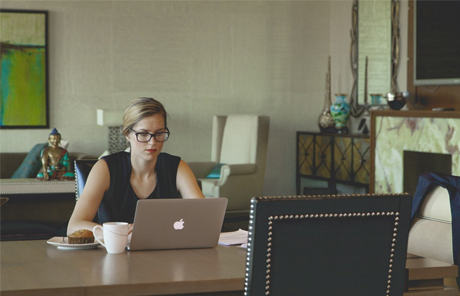
The Balancing Act: Mitigating the ‘Always-On’ Culture within Flexible Work Schedules
- Posted by Joel Okoye
- March 18, 2024
The classic burnout problem has been an ever-present thorn in the side of the aspiring lawyer and, as problematic as it is, has long been seen as the price to pay for a richly – or even moderately – successful career. While the legal profession has been known for its resistance to change at times, let alone change to what was sometimes deemed by previous generations to be a winning formula for career success in the profession, whispers around the detriment of this ‘always on culture’ to personal and professional health have gradually turned into full-blown conversations since the dawn of the post-pandemic era and led to the high demand for flexibility we see in the discourse among legal professionals today.
This topic of flexible/remote/hybrid working has been the buzz of the legal space for much of the post-pandemic period, and although initially met with some pushback, most firms have now found themselves having to toe the line, whether that be to meet the expectations of the talent they are looking to hire, keep themselves in contention hiring-wise or keep existing employees happy. Legal professionals, particularly the Gen Z cohort, have been the prime advocates for this change in working practices, largely as a result of the burnout problem prevalent during – and exacerbated by – the pandemic. In an effort to counteract the effect that rising pressures on business have had on employee wellbeing, legal professionals have asked for respite in the form of flexibility – and after some initial resistance, employers now seem to be warming up to it.
But 4 years down the line, the question has to be asked: Is it all that it’s cracked up to be?
Flexible working – A double-edged sword?
Some would argue that the answer to this question is a resounding yes, as the rise of a tech-centric way of working has proven to be key in establishing new, healthier and cheaper ways of working and living in a demanding and economically tumultuous time. The dreaded long commutes to work are a thing of the past for many, as are the headaches that fitting one’s work schedule around pressing personal and care needs brings on a weekly basis. The freedom and balance that such schedule offers cannot and should not be understated, and for over 75% of respondents of our latest Salary Survey report said to be currently uninterested in making a move any time soon, it was found to be their biggest reason for inertia.
The other side of the argument, however, is that perhaps surprisingly, it is proving to be somewhat problematic. As instrumental as it has been in breathing a new lease of life into legal careers across the industry, it has ended up having quite the opposite effect for some. The rapid progression of technology during and post-pandemic has no doubt brought people more together and more connected than ever, but as this has as much intrapersonal implications as it does interpersonal, it consequently means multiple aspects of an individual’s life also become tethered to one another, blurring the lines between home and work. The near-seamless transition that a flexible way of working provides between these otherwise set boundaries – with the speed and ease of communication that email and digital video technology provide – make connecting with colleagues and employers as effortless and as easy as it is with family, friends and loved ones. Team members can reach one another with a simple Zoom or Teams call and are each only an email or text message away, and suddenly it almost feels like one is expected to be available round the clock. Without the physical barriers that dictate the end of a working day and the start of another, people are finding it harder to compartmentalise work life and personal life and as a result, are as switched on and connected mentally as they are digitally to colleagues and employers even after working hours. The FOMO that it can generate as a result is seriously detrimental.
Toby Pochron, employment director at law firm Freeths signals the practicality issue inherent to a flexibility-oriented work life, a rather ironic actuality – considering it was meant to eliminate rather than add to the ‘always-on mentality prominent in work cultures across the industry:
“Workers, for example, are constantly connected to not just friends and family but colleagues and employers through the same devices. The ever-present ability to check emails, for example, is a major problem. Once emails are checked, if “urgent” things are identified, there is a temptation to deal with them immediately, even if that means outside working hours.”
Does flexible working boost or hinder productivity?
An even more poignant reality to discuss is its impact on productivity, and how, despite the general perception around the degree of autonomy flexible working offers, it can be a driver of burnout through the restrictive way in which it forces some employees to live their work life. A study conducted by the University of Essex and the University of Chicago found an interesting pattern with regard to the productivity levels of employees working in an IT company during the pandemic, noting that although working hours rose in that time – by roughly 30% – including an 18% increase in out-of-hours working, overall productivity did not significantly change. Technology was found to play a key part in setting this pattern, as the sharp rise in meeting hours and email traffic meant there was a greater cost to pay for seamless collaboration and communication, a cost that came in the form of their autonomy –a factor found by the NALP to be one of the biggest drivers of burnout. As one might expect, this naturally leads to the behaviours normally associated with burnout, such as regular working out of hours – to compensate for a perceived lack of professional efficacy, and a resulting chronic exhaustion that only serves to compound the productivity problem and ultimately the business’ bottom line.
Such issues put significant strain on mental and emotional resources and also make formal and informal working relationships difficult to build or maintain for an employee, which leads to a distinct lack of engagement with and increased distancing from work life – another common sign of burnout. Dr.Christoph Siemroth, one of the researchers involved in the above study, remarked on its impact on general capacity to build interpersonal relationships both in and out of work: “Additional evidence for this view is that employees networked less – they had fewer contacts with colleagues and business units both inside and outside the firm.”
This has a particularly marked effect on new employees trying to find their feet during onboarding processes and the balancing act of juggling work and personal responsibilities in a new and unconventional work lifestyle. The lack of person-to-person contact and informal interaction (which is often crucial to building relationships with colleagues and a strong sense of stability in the early days of one’s tenure) present in a virtual meeting compared to a physical one, can lead to a disconnect between trainee/manager and employee and make integration an even bigger challenge, exacerbating burnout as a result. Employees already part of the furniture aren’t immune to this intrinsic issue within flexible working either, as the nature of virtual collaboration dictates that working relationships are the focus of any interpersonal interaction made, with any informal talk kept to a minimum to prioritise productivity.
So, when the evidence points to a clear trend, counterintuitive as it may seem to imply that flexibility can be detrimental to overall professional wellbeing, it is pertinent to ask at this junction: what are the reasons it’s doing more harm than good?
The work-life balance conundrum
Employers are falling into the all too common trap of defining what work-life balance means for their employees, when one of the most pertinent things about flexible working is the term’s inherent applicability to all lifestyles – whether that be in the form of a fixed hybrid schedule, a malleable working schedule or a fully remote one. Not every employee wants the lines between their work and personal life blurred, while some need the two to be closely linked, in order to allow for a work pattern that best supports their preferred style of working.
A study conducted by Gallup to investigate the preferred work styles amongst the U.S. workforce highlights the importance of allowing employees to decide what a healthy flexible working arrangement is for them. When asked what work schedule would be the most ideal out of a choice of a 9-5 job (with a clear divide between work and personal life) and a blend of the two throughout a working day, the results showed that out of all participants, 50% preferred the former (termed splitters) while the other 50 chose the latter (termed blenders). What was even more interesting was that out of a survey of large-company CHROs, they found that HR leaders repeatedly underestimated how much of their workforce wanted to be splitters.
While the former set of results did vary by work-type, the key takeaway from the research was that employees not working in their preferred ways were more likely to report experiencing burnout, be less engaged and most importantly to hiring managers – on the market for a new job. Making the choice for your workers or team regarding what manner of flexible working suits them best is counterproductive to individual productivity and can cause the aforementioned issues exhibited by individuals struggling with burnout – issues that, out of all the burnout symptoms, have been shown to be among the top 10 that impact health and longevity.
Your legal team: understanding your ‘splitters’ and ‘blenders’
Your goal therefore as an employer when approaching flexible working should be to understand on what spectrum each member of your workforce lies – whether they lean towards the splitter or the blender type – and devise an informed solution that best addresses their needs. This is especially important where a neurodiverse employee is concerned, as they largely depend on this kind of support and understanding from their employer in order to thrive at their job. The best way to approach doing this is to make it a leadership problem first before an employee one, as due to the systemic nature of the problem of burnout, its root causes must be tackled at the top first, before any resulting effects can be seen on the workforce.
As such, the onus is on a firm’s leaders to begin by cultivating an environment that prioritises strong relationships and builds autonomy, belonging, competence and individual gratification from work, as this has been shown according to research, to mitigate burnout in workforces. This can and should be done by incorporating this into any programmes undertaken by leadership figures in the firm, and going a step further to make it part of formal coaching, as this helps to make the concepts of risks and consequences of burnout real to leaders, and offers a more bespoke and systemic approach to resolving individual-specific challenges with resolving burnout in one’s team. A core part of this is involving and utilising employee perspectives and experiences, as this will best inform the solutions you intend to craft for your own workforce.
When this is done, you put the control and autonomy that can otherwise feel out of reach, back into your workers’ hands, thereby enabling them to work in a way that best suits them, and tighten any gaps present in employer-employee/colleague relationships to build the support systems that a workforce needs to keep them afloat should things become difficult to manage individually (which is often the case among lawyers in the industry). And most importantly, you heal that fracture that appears in their self-worth as a result of the sense of professional inadequacy burnout causes, as well as the physical and mental exhaustion it can lead to.
Perhaps most pertinent to the discussion hiring-wise, is its profound impact on retention efforts – as at the end of the day the simple math is – the less unhappy and burnt-out employees are, the less likely they are to be watching out or actively searching for a new job – an undesirable situation for any employer to be amidst a widespread skills shortage problem. As far as recruitment is concerned, it significantly broadens your reach to otherwise shut-out segments of the legal talent pool unable to find what best suits their needs flexible-working-wise, and keeps you front of mind to the kind of legal professionals your firm may find annoyingly elusive.
About Clayton Legal
Clayton Legal has been partnering with law firms across the country since 1999 and has built up an enviable reputation for trust and reliability during that time. We have made over 5,000 placements from Partners to Legal Executives, Solicitors to Paralegals and Legal I.T. personnel to Practice Managers.
If you are building your legal team or looking for your next career move, we can help. Call us on 01772 259 121.




